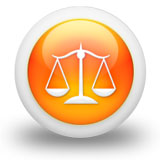We need your consent to use the individual data so that you can see information about your interests, among other things. Click "OK" to give your consent.
ASTM D3558-15
Standard Test Methods for Cobalt in Water
STANDARD published on 1.2.2015
The information about the standard:
Designation standards: ASTM D3558-15
Note: WITHDRAWN
Publication date standards: 1.2.2015
SKU: NS-631363
The number of pages: 13
Approximate weight : 39 g (0.09 lbs)
Country: American technical standard
Category: Technical standards ASTM
The category - similar standards:
Annotation of standard text ASTM D3558-15 :
Keywords:
atomic absorption, chelation, cobalt, graphite furnace, water ,, ICS Number Code 13.060.50 (Examination of water for chemical substances)
Additional information
| Significance and Use | ||
|
4.1 Most waters rarely contain more than trace concentrations of cobalt from natural sources. Although trace amounts of cobalt seem to be essential to the nutrition of some animals, large amounts have pronounced toxic effects on both plant and animal life. |
||
| 1. Scope | ||
|
1.1 These test methods cover the determination of dissolved and total recoverable cobalt in water and wastewater
|
Concentration Range |
Sections |
|
Test Method A—Atomic Absorption, Direct |
0.1 to 10 mg/L |
7 to 16 |
|
Test Method B—Atomic Absorption, Chelation-Extraction |
10 to 1000 μg/L |
17 to 26 |
|
Test Method C—Atomic Absorption, Graphite Furnace |
5 to 100 μg/L |
27 to 36 |
1.2 Test Method A has been used successfully with reagent water, potable water, river water, and wastewater. Test Method B has been used successfully with reagent water, potable water, river water, sea water and brine. Test Method C was successfully evaluated in reagent water, artificial seawater, river water, tap water, and a synthetic brine. It is the analyst's responsibility to ensure the validity of these test methods for other matrices.
1.3 The values stated in SI units are to be regarded as standard. The values given in parentheses are mathematical conversions to inch-pound units that are provided for information only and are not considered standard.
1.4 This standard does not purport to address all of the safety concerns, if any, associated with its use. It is the responsibility of the user of this standard to establish appropriate safety and health practices and determine the applicability of regulatory limitations prior to use. For specific hazard statements, see 11.8.1, 21.12, and 23.10.
|
Standard Test Methods for Lead in Water (Withdrawn 2024) |
|
|
Standard Test Methods for Iron in Water |
|
|
Standard Practice for Writing Quality Control Specifications for Standard Test Methods for Water Analysis |
|
|
Standard Practice for Measuring Trace Elements in Water by Graphite Furnace Atomic Absorption Spectrophotometry |
|
|
Standard Test Methods for Cadmium in Water |
|
|
Standard Test Methods for Zinc in Water |
|
|
Standard Terminology Relating to Water (Includes all amendments and changes 2/14/2024). |
|
|
Standard Practice for Sampling Steam (Includes all amendments and changes 12/31/2018). |
|
|
Standard Test Methods for Manganese in Water |
|
|
Standard Practice for Determination of Precision and Bias of Applicable Test Methods of Committee D19 on Water |
|
|
Standard Test Methods for Nickel in Water (Includes all amendments and changes 12/22/2021). |
|
|
Standard Test Methods for Copper in Water |
|
|
Standard Test Methods for Chromium in Water |
|
|
Standard Specification for Reagent Water |
|
|
Standard Test Method for Elements in Water by Inductively Coupled Plasma´Mass Spectrometry |
|
|
Standard Practice for Estimation of Holding Time for Water Samples Containing Organic and Inorganic Constituents |
|
|
Standard Practices for Sampling Water from Flowing Process Streams |
|
|
Standard Guide for Spiking into Aqueous Samples |




 Cookies
Cookies
